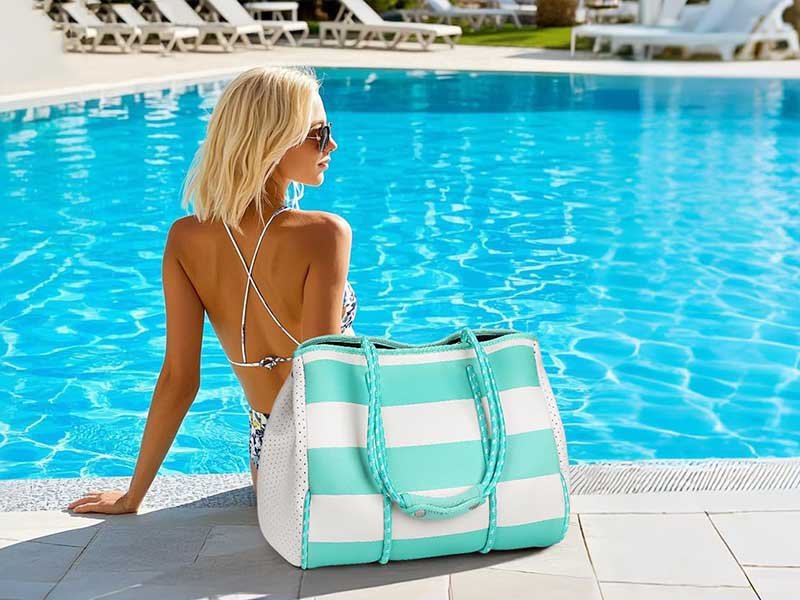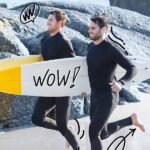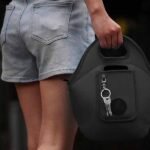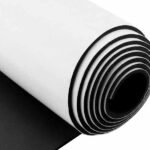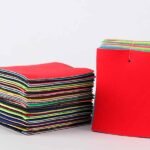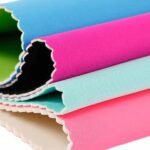Neoprene bags have become a staple for brands seeking a blend of durability, water resistance, and a premium “soft touch” feel. From tech sleeves that protect laptops to fashion totes and cooler carriers, neoprene’s versatility is unmatched. Yet, not all manufacturers are created equal: some excel at rapid, low‑volume prototyping; others specialize in eco‑friendly formulations or artisan craftsmanship. Identifying the partner that aligns with your brand’s priorities—be it cost, speed, sustainability, or design innovation—can make or break your product launch.
The best neoprene bag manufacturers combine in‑house compounding, CAD/CAM die‑cutting, and multi‑technique decoration (sublimation, screen, emboss). They maintain ISO/BSCI‑certified QMS with AQL 2.5 sampling, offer MOQs from 25 to 150 units, and prototype in 1–7 days. Regional strengths vary: China for cost and scale, Vietnam for agility, USA for rapid protos, Italy for luxury finish, and Taiwan for technical R&D.
Imagine you’ve designed the perfect limited‑edition neoprene lunch tote for your upcoming campaign—only to discover your supplier’s eight‑week lead time. Your window to market closes before your prototypes even arrive. Let’s walk through the capabilities that distinguish the truly agile neoprene partners and how to choose the one that ensures you launch on time and on brand.
What Core Capabilities Define a Top Neoprene Bag Manufacturer?
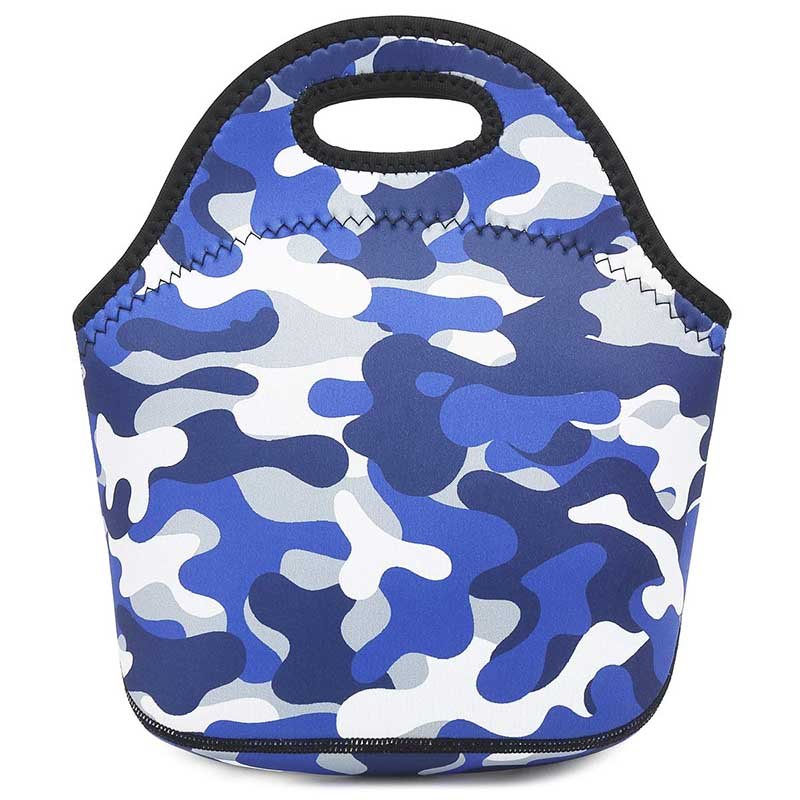
Top neoprene manufacturers control every step: from sourcing medical‑grade or limestone‑based chloroprene rubber, to using CAD/CAM cutters for ±0.1 mm accuracy, followed by in‑house decoration (sublimation, UV print), ultrasonic welding, and ISO/BSCI‑audited assembly lines. Onsite labs conduct ASTM tensile, UV aging, and hydrostatic tests. Their engineering teams deliver 3D dielines and value‑engineer for cost savings without compromising performance.
Material Science & Sourcing
- Chloroprene Grades: Suppliers often choose between petroleum‑based and limestone‑based neoprene. Limestone variants reduce CO₂ emissions by ~40%, while medical‑grade rubber boasts superior elasticity and minimal odor.
- Additives & Coatings: UV stabilizers, antimicrobial agents, and flame‑retardant compounds can be integrated during compounding. Mastery of additive ratios ensures long‑term durability without brittleness.
Precision Cutting & Assembly
- CAD/CAM Die‑Cutting: Machines like Zünd and Gerber slice multiple neoprene layers (up to 10 mm thickness) with ±0.1 mm accuracy, minimizing waste and downtime. Manual die‑cutting remains for intricate shapes or small runs.
- Ultrasonic Welding & Lamination: Some factories use ultrasonic bonding to fuse edges seamlessly. Others laminate neoprene to fabrics (nylon, polyester) with heat‑activated adhesives, enhancing water resistance.
Decoration & Branding
- Sublimation Printing: Perfect for full‑color, edge‑to‑edge graphics on polyester‑faced neoprene.
- Screen & UV Printing: Ideal for spot colors or metallic inks. Leading partners stock OEKO‑TEX®‑certified inks and perform wash‑fastness tests (AATCC TM61).
- Embossing/Debossing & Laser Engraving: Create tactile logos without ink, suitable for luxury branding.
Sewing & Finishing
- Industrial Machinery: High‑speed walking foot and cylinder bed machines produce flat, pucker‑free seams. Automatic vision systems detect skipped stitches in real time.
- Hardware Integration: From YKK water‑resistant zippers to anodized aluminum D‑rings and buckles, in‑house hardware presses ensure consistent fit.
Quality Assurance
- Certifications: ISO 9001 (QMS), BSCI/SMETA (social compliance), and ISO 14001 (environmental management).
- Testing Labs: Onsite labs run ASTM D412 (tensile), ASTM D573 (heat aging), and ASTM D751 (hydrostatic) tests, guaranteeing each batch meets spec.
Engineering & R&D
- Rapid Prototyping Teams: 3D CAD dieline creation within 24 hours, physical samples in 2–7 days.
- Value‑Engineering: Propose alternative materials or streamlined constructions that reduce cost 10–20% without sacrificing performance.
Which Neoprene Products and Customization Options Are Available?
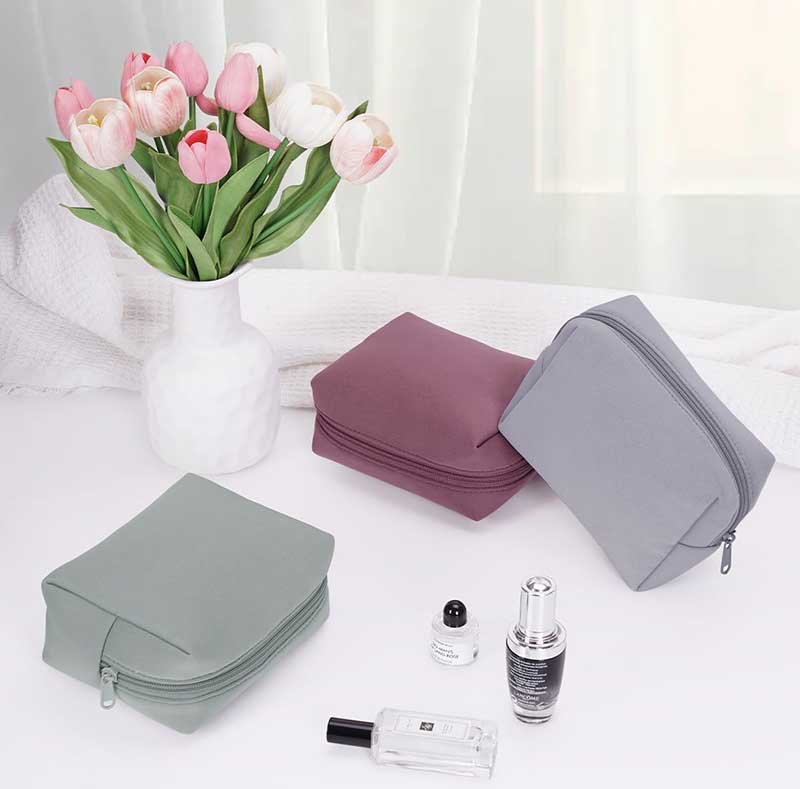
Manufacturers offer laptop/tablet sleeves, fashion totes, lunch totes, beverage carriers, camera harnesses, and sport arm bands. Customization spans die shapes, edging (overlock, binding), interior linings (mesh pockets), hardware (YKK zippers, metal pulls), and decorations including sublimation, screen, embossing, and laser engraving. Premium packaging options include branded kraft boxes, hang tags, and compostable polybags.
Product Categories
- Tech Protection: Padded laptop/tablet sleeves (11″–17″), headphone pouches, cable organizers.
- Food & Beverage: Insulated lunch bags, six‑pack coolers, wine totes with reinforced bottoms.
- Sports & Outdoors: Neoprene hydration carriers, armbands, protective sleeves for action cameras.
- Fashion & Promo: Clutches, cosmetic pouches, branded swag (conference giveaways).
Cut & Sew vs. Molded
- Die‑Cut Panels: Suited for complex, multi‑layer shapes. Allows mixing of neoprene with contrasting fabrics.
- Compression Molding: Creates 3D forms (e.g., beverage holsters) using custom molds (US$1,200–2,500 tooling), ideal for mid‑to‑high volumes.
Decoration Techniques
- Full‑Color Sublimation: Requires polyester‑coated neoprene; brilliant, durable prints.
- Screen Printing: Economical for spot colors; best for logos and simple graphics.
- Embossing/Debossing: Heat‑and‑pressure branding for subtle, tactile logos.
- Laser Engraving: Etches top layer to reveal contrast beneath, perfect for limited runs.
Hardware & Trims
- Zippers: YKK coil, water‑resistant teeth, invisible zips, metal or plastic pulls.
- Buckles & D‑Rings: Plastic side‑release, metal carabiners, anodized aluminum rings.
- Webbing & Straps: Flat or tubular nylon/polyester straps, adjustable sliders.
Packaging & Presentation
- Retail‑Ready: Hang tags, blister packs, custom printed sleeves.
- Eco‑Options: Kraft boxes, compostable mailers, recycled cardboard inserts.
Turnkey Design Support
- 3D Visualization: Real‑time edits on 3D renders for color and seam placement.
- Material Swatches: Pantone‑matched neoprene and hardware finish samples.
How Do Manufacturers Maintain Quality and Consistency?
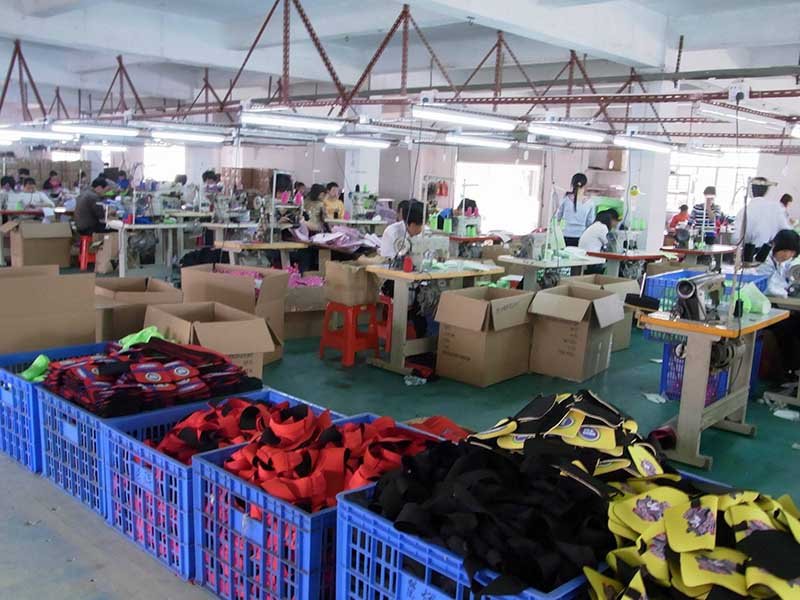
Quality assurance hinges on ISO 9001 QMS, BSCI/SMETA audits, and AQL 2.5 sampling (ANSI/ASQ Z1.4). Inline inspections at each assembly station catch defects early. Onsite labs run ASTM D412, D573, and D751 tests. Batch coding and ERP traceability link raw sheet IDs to final units, enabling swift recalls if needed.
Quality Management Systems (QMS)
- ISO 9001 Certification: Documents every process—from incoming raw neoprene inspections to final packaging protocols.
- AQL Sampling Plans: Following ANSI/ASQ Z1.4, categorize defects as critical, major, or minor. With AQL 2.5, outbound defect rates stay under 0.65%.
Inline & Final Inspections
- First‑Article Inspection (FAI): Verifies first prototype against spec sheet before mass production.
- Inline QC Stations: Conduct visual seam checks, seam strength pull tests, and print color calibration every 50–100 units.
- Final Audit: 100% check of critical dimensions and packaging integrity before shipment.
Laboratory Testing
- Mechanical Tests: Tensile (ASTM D412), tear (ASTM D624), and compression set tests.
- Environmental Tests: UV aging (ASTM D573) and hydrostatic resistance (ASTM D751) simulate real‑world exposure.
Digital Traceability & ERP
- Batch Coding: Laser‑etched IDs on raw neoprene sheets; CNC cutter logs link panels to source sheet.
- ERP Integration: Tracks material lot numbers, labor hours, defect logs, and shipment details for analytics and audits.
Continuous Improvement
- Root Cause Analysis (RCA): Pareto charts identify top defect categories; corrective actions via PDCA cycles.
- Staff Training: Monthly workshops on sewing techniques, print setup, and QC best practices.
Third‑Party Audits
- SGS/Bureau Veritas: Random inspections validate internal QC.
- Social Compliance: BSCI, SMETA, and WRAP audits ensure ethical labor and environmental standards.
Do Low MOQs and Rapid Prototyping Impact Your Time‑to‑Market?
Low MOQs (as few as 25–100 units) and rapid prototypes (1–7 days) shorten development cycles by up to 40%. Digital dieline proofs ship same‑day; physical samples arrive overnight via FedEx/DHL. Agile workflows allow iterative design—key for seasonal or limited‑edition launches.
Minimum Order Quantities (MOQs)
- Ultra‑Low Runs: U.S. prototyping houses like CaliPro Samples accept MOQ 25; boutique Italy ateliers start at 50.
- Cost Trade‑Offs: Unit price drops 15–20% when MOQ scales from 100 to 500, but small initial runs mitigate inventory risk.
Digital vs. Physical Prototyping
- Digital 3D Renders: Delivered in 24 hours; stakeholder sign‑off can proceed remotely using AR preview apps.
- Physical Samples: Onsite sample rooms produce cut‑and‑sew prototypes in 1–7 days; expedited shipping ensures arrival within 1–2 days.
Agile Development Process
- Sprints & Iterations: Weekly design sprints allow multiple sample rounds—clients refine color, hardware, and seam styles quickly.
Impact on Launch Windows
- Traditional vs. Agile Timelines: Traditional MOQ 500–1,000 orders with external proto services take 8–12 weeks. Agile low‑MOQ reduces cycle to 4–6 weeks.
- Market Responsiveness: Brands can seize trend peaks (e.g., festival season) without overcommitting inventory.
Risk Reduction
- Pilot Runs: Small pilot batches reveal hidden issues—print alignment, seam puckering—before scale.
- Flexible Contracts: Many suppliers allow order adjustments up to 48 hours before mass cutting.
Are Sustainable Neoprene Materials and Eco‑Friendly Processes Offered?
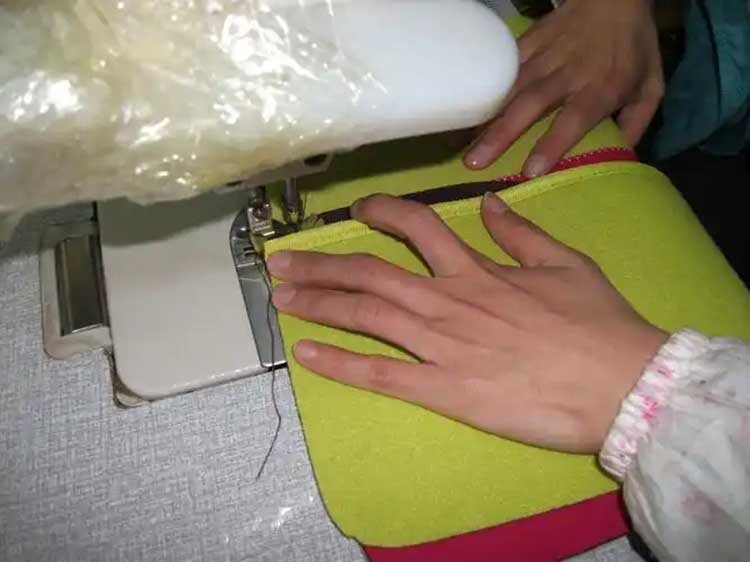
Yes. Limestone‑based neoprene cuts carbon footprint ~40%, dope‑dyed sheets eliminate post‑dye water use by 60%, and closed‑loop water systems recycle 80% of rinse water. OEKO‑TEX® Standard 100, GRS, and Bluesign® certifications ensure chemical and social compliance. Waste trim is granulated and upcycled into floor mats or insulation.
Eco‑Friendly Neoprene Variants
- Limestone‑Based Chloroprene: Uses calcium carbonate instead of petrochemicals, reducing greenhouse gas emissions by ~40%.
- Bio‑Based Additives: Integration of soy‑bean oil or reclaimed rubber improves biodegradability.
Water & Energy Conservation
- Dope Dyeing Technology: Pigments added during extrusion; eliminates water‑intensive dye baths and reduces energy use by 30–50%.
- Closed‑Loop Systems: Water used in cooling and washing is filtered and recirculated—cutting freshwater intake by up to 80%.
Waste Management & Circularity
- Trim Recycling: Off‑cuts ground into crumb and reincorporated into lower‑grade neoprene mats, yoga blocks, or industrial seals.
- Energy Recovery: Non‑recyclable scraps are incinerated in waste‑to‑energy plants with flue gas cleaning systems.
Certifications & Transparency
- OEKO‑TEX® Standard 100: Verifies absence of harmful substances.
- Global Recycled Standard (GRS): Certifies recycled content and chain of custody.
- Bluesign® System: Ensures chemicals, processes, and resource use meet stringent environmental criteria.
Social Responsibility
- Fair Labor Audits: BSCI, SMETA, and WRAP inspections confirm ethical working conditions.
- Community Programs: Leading suppliers partner with NGOs to upskill local communities in sustainable manufacturing.
Marketing Your Green Credentials
- Lifecycle Assessments (LCA): Provide cradle‑to‑gate carbon footprint data.
- Eco‑Labels on Packaging: Highlight “30% recycled neoprene,” “Water use reduced by 65%,” and other metrics.
Which Regions Excel in Neoprene Bag Manufacturing and Why?
China dominates in scale and vertical integration; Vietnam shines in low‑MOQ agility; USA leads rapid prototyping; Italy commands luxury finishes; Taiwan drives technical R&D; Turkey and Brazil offer regional cost advantages; UK and Canada support small‑batch, high‑service models. Choose based on your brand’s cost, speed, and quality priorities.
China: Scale & Integration
- Vertical Clusters: Shenzhen/Dongguan combine compounding, cutting, sewing, printing, and packing—reducing lead times by 20%.
- Cost Efficiency: Large‑scale chemical mills nearby cut raw neoprene costs by up to 15%.
Vietnam: Agile Low‑MOQ Hub
- SME Ecosystem: Hundreds of small plants specialize in 50–200 unit runs, prototyping in 5–7 days.
- Trade Access: CPTPP and EVFTA lower tariffs for EU and North America, improving landed cost.
United States: Rapid‑Turn Specialists
- Onshore Sample Rooms: California and Texas shops deliver same‑day CAD renders and 1–2 day physical samples.
- Premium Positioning: “Made in USA” adds brand equity for medical and lifestyle markets.
Italy: Luxury & Craftsmanship
- Artisanal Finishing: Hand‑painted edges, custom hardware, and boutique sample ateliers.
- Design Innovation: Milan partnerships drive trend‑forward product lines.
Taiwan, China: Technical Excellence
- R&D Institutes: Collaborations yield proprietary coatings (hydrophobic, UV‑resistant) and antimicrobial treatments.
- Quality Culture: ISO 14001 environmental management and lean manufacturing improve consistency.
Other Key Regions
- Turkey & Brazil: Strategic logistics corridors to Europe (Turkey) and LATAM (Brazil), with regional social and environmental certifications.
- UK & Canada: Small‑batch, high‑touch services—MOQ 25–75, next‑day domestic shipping, and BSI/ISO audits.
Who Are the 16 Best Neoprene Bag Manufacturers Worldwide?
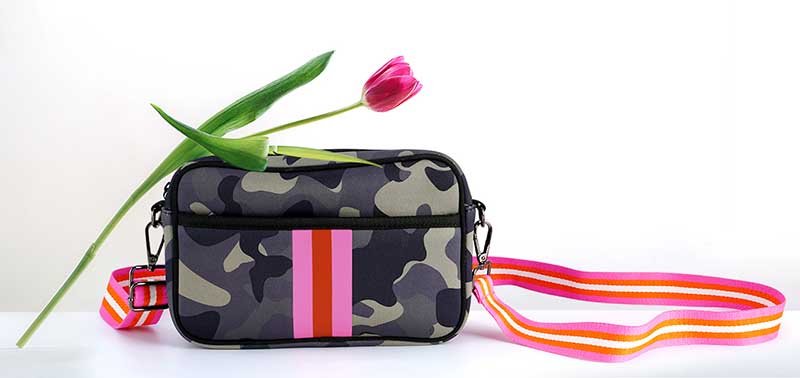
Below is an updated roster of the top neoprene bag suppliers—each selected for proven manufacturing excellence, customization depth, and reliable lead times.
1. J.D. Handbag Factory
Founded: 2007
Location: Dongguan, China
Website: https://www.jdhandbagfactory.com/
Core Products: Laptop sleeves, tote bags, lunch totes, promotional pouches
Cooperation Advantages: Vertical integration from material compounding to sewing ensures tight cost control. Offers both CAD‑driven die‑cutting and ultrasonic welding. Low MOQ (100 pcs) with sample lead times of 5–7 days. Supports FOB Shenzhen and DDP worldwide.
2. Fieldtex Cases
Founded: 2003
Location: Vancouver, Canada
Website: https://fieldtexcases.com/
Core Products: Protective tech sleeves, camera holsters, tool pouches
Cooperation Advantages: Specialty in form‑fit neoprene cases—uses medical‑grade rubber for superior shock absorption. In‑house sublimation and screen printing. Sample turnaround in 7 days, MOQs starting at 50 pcs, North American DDP in 3–5 days.
3. Dagne Dover
Founded: 2013
Location: New York, USA
Website: https://www.dagnedover.com/
Core Products: Fashion totes, travel organizers, neoprene backpacks
Cooperation Advantages: Premium U.S.–based design studio with small‑batch runs (MOQ 75). Rapid prototyping (3 days) and in‑house QA lab. Offers FDA‑compliant materials and dyes, with domestic fulfillment in 2–3 days.
4. Jin Sheu
Founded: 2010
Location: Kaohsiung, Taiwan, China
Website: https://www.jinsheu.com/
Core Products: Lunch totes, cooler bags, beverage carriers
Cooperation Advantages: Specializes in food‑grade neoprene with FDA‑approved inner liners. MOQ 100, 5‑day sample service, and AQL 2.5 inspections. Ships DDP to Asia‑Pacific in under 10 days.
5. Dallas Hill Design
Founded: 2008
Location: Dallas, Texas, USA
Website: https://dallashilldesign.net/
Core Products: Promotional sleeves, branded lunch bags, event giveaways
Cooperation Advantages: Boutique manufacturer focusing on custom printing (heat transfer, screen). Low MOQ (50) and same‑week prototyping. U.S. fulfillment center delivers DDP across North America in 3–4 days.
6. Avecobaggie
Founded: 2015
Location: Shenzhen, China
Website: https://avecobaggie.com/
Core Products: Fashion clutches, neoprene apparel accessories, promotional kits
Cooperation Advantages: Agile startup with MOQ 100 and 4‑day proto. Integrates laser cutting and ultrasonic welding for seamless edges. Offers bonded‑warehouse DDP to EU in 20 days.
7. Possess Sea
Founded: 2012
Location: Los Angeles, California, USA
Website: https://www.possesssea.com/
Core Products: Beach totes, cooler sleeves, travel pouches
Cooperation Advantages: Combines West Coast design sensibility with rapid sample service (2 days). MOQ 75, domestic DDP in 2–3 days. Uses OEKO‑TEX® inks and recyclable polybags.
8. MCL Sports Factory
Founded: 2009
Location: Guangzhou, China
Website: https://www.mclsportsfactory.com/
Core Products: Sports armbands, hydration carriers, athletic sleeves
Cooperation Advantages: Specializes in performance neoprene with antimicrobial finishes. MOQ 100, 5‑day prototyping, and fully vertical workflow from compounding to packing. Ships FOB Guangzhou.
9. Chuan Kui Enterprises Co., Ltd.
Founded: 2006
Location: Kaohsiung, Taiwan, China
Website: https://www.neoprenematerial.com/
Core Products: Industrial covers, protective sleeves, promotional pouches
Cooperation Advantages: In‑house lab for ASTM tensile and aging tests. MOQ 150, 7‑day sample cycle. Exports DDP worldwide via bonded Kaohsiung warehouse.
10. Pop Ups Brand
Founded: 2014
Location: Ho Chi Minh City, Vietnam
Website: https://popupsbrand.com/
Core Products: Retail neoprene displays, branded merch bags
Cooperation Advantages: End‑to‑end Vietnam‑based service: low MOQ (80), prototype in 6 days, and consolidated sea freight to EU/NA under CPTPP terms.
11. Benshine Bags
Founded: 2011
Location: Dongguan, China
Website: https://www.benshine-bags.com/
Core Products: Laptop cases, promotional sleeves, wine carriers
Cooperation Advantages: Tier‑1 OEM with own compounding plant—ensures consistent neoprene quality. MOQ 100, 5‑day proto, and 25‑day DDP to major global markets.
12. Made-in-China.com
Founded: Platform since 1998; various factories
Location: Dongguan & Shenzhen, China
Website: https://dongguan.made-in-china.com/
Core Products: Wide range—from industrial wraps to fashion bags
Cooperation Advantages: Aggregates dozens of vetted factories offering MOQs as low as 50, sample lead times of 5–7 days, and competitive pricing for bulk orders.
13. The Skargard Company
Founded: 2007
Location: Stockholm, Sweden
Website: https://www.theskargardcompany.com/
Core Products: Marine‑grade neoprene covers, protective gear pouches
Cooperation Advantages: OEM for marine OEMs—uses UV‑stabilized neoprene. MOQ 120, 7‑day prototyping, and DDP to EU and North America in 10–14 days.
14. ToteBagManufacturers.com
Founded: 2010
Location: Guangzhou, China
Website: https://www.totebagmanufacturers.com/
Core Products: Neoprene tote bags, lunch totes, full‑color printed pouches
Cooperation Advantages: Specializes in wholesale MOQ from 100. Offers digital mockups in 2 days, physical samples in 5 days, and FOB Guangzhou pricing.
15. GoldSupplier (KeepLong Sport)
Founded: 2013
Location: Ningbo, China
Website: https://keeplongsport.goldsupplier.com/
Core Products: Sports bottle carriers, phone armbands, laptop sleeves
Cooperation Advantages: Certified GRS and Sedex. MOQ 80, sample turnaround 6 days. Ships via Ningbo port with DDP options to EU/NA.
16. Lomo UK
Founded: 2005
Location: London, United Kingdom
Website: https://www.lomo.co.uk/
Core Products: Fashion neoprene accessories, tech sleeves, promotional items
Cooperation Advantages: UK–based prototyping (3 days) and small‑batch production (MOQ 50). Offers QC to BSI standards and next‑day UK DDP shipping.
How to Choose the Right Neoprene Bag Manufacturer for Your Brand?
Align on four pillars: material expertise (medical vs. limestone‑based), prototyping speed, MOQ flexibility, and sustainability credentials. Evaluate engineering support (3D CAD, AR previews), QC systems (ISO/BSCI/AQL), and regional logistics. Request LCAs, CoAs, and virtual or in‑person audits before a pilot run.
Define Your Brand Priorities
- Cost vs. Quality: Budget lines benefit from Chinese or Vietnamese scale; luxury or small‑batch labels may invest in Italian or U.S. prototyping specialists.
- Speed vs. Volume: Urgent seasonal launches call for partners with domestic sample labs (e.g., CaliPro, Dallas Hill), while baseline orders of 500+ leverage low unit costs in China.
Assess Technical & Design Support
- Engineering Resources: Does the factory provide a dedicated engineer to refine dielines, test materials, and propose cost‑saving alternatives?
- Digital Collaboration Tools: AR/VR sampling platforms, cloud‑based project management, and online dashboards (as seen with Szoneier) vastly improve communication speed.
Quality & Compliance
- Certifications: Insist on ISO 9001 (quality), ISO 14001 (environment), BSCI/SMETA (social), OEKO‑TEX®, and relevant food/medical approvals.
- Factory Audits: Plan virtual or onsite tours; consider third‑party audits (SGS/Bureau Veritas) for unbiased validation.
Sustainability & Transparency
- Material Traceability: Request Certificates of Analysis (CoA) for raw neoprene compounds.
- Lifecycle Data: Compare LCA reports to quantify water, energy, and carbon savings.
Logistics Considerations
- Nearshore vs. Offshore: Factor air vs. sea freight, lead times, and import duties.
- Communication & Culture: Ensure your partner has English‑fluent account managers and a responsive communication protocol.
Pilot & Scale
- Trial Orders: Start with a small pilot (25–100 units) to vet quality, packaging, and shipping reliability.
- Scale Planning: Confirm your partner’s capacity to ramp 5× during peak seasons.
Long‑Term Partnership
- Innovation Pipeline: Choose suppliers investing in R&D (e.g., Taiwan’s Formosa Neoprene, Italy’s MilanoNeoprene).
- Strategic Alignment: Look for shared values around sustainability, quality, and agility.
Ready to Launch Your Custom Neoprene Line?
Selecting the right manufacturing partner is critical for hitting your launch dates, controlling costs, and upholding your brand’s quality and sustainability commitments. Whether you need ultra‑low MOQs, rapid 24‑hour prototypes, eco‑friendly neoprene, or luxury finishes, one of these 16 suppliers has the capabilities to bring your vision to life.
Contact Szoneier today at manager@neoprene-bag.com to discuss your neoprene project.
Our Shenzhen campus handles in‑house compounding, rapid CAD/3D prototyping in 5 days, and DDP shipping from bonded warehouses in Los Angeles and Hamburg—ensuring you get samples fast and go to market sooner.

